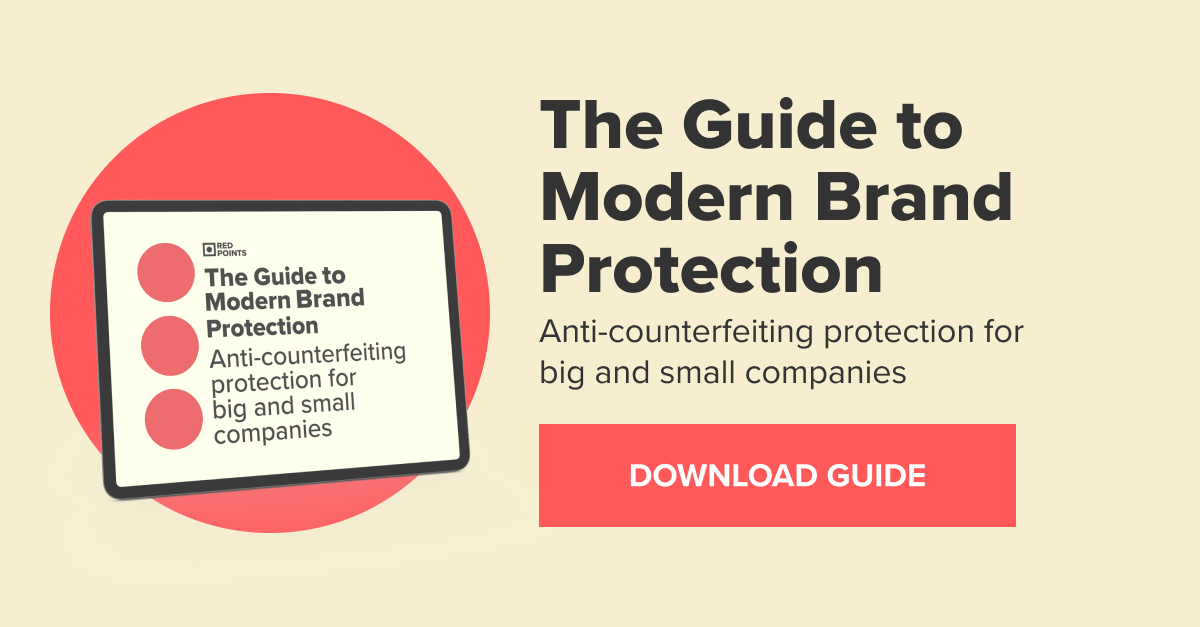Encouraging your customers to avoid counterfeits, and teaching them how to spot fakes, is an important part of brand protection.
- Brands should teach people how to spot fake versions of their products
- The dangers certain counterfeit products pose must be highlighted to consumers
- Educate your customers about the harms of counterfeiting to keep them honest
Brand protection is about more than simply registering intellectual property and enforcing it against counterfeiters and other IP thieves. While these are certainly vital aspects of a brand protection strategy, informing customers on how to spot fakes, as well as educating them on the harms caused by supporting counterfeiting, can elevate IP protection greatly.
Teach your customers to spot fakes
The key to educating consumers about counterfeiting is to highlight aspects of your product that are the most difficult for counterfeiters to copy perfectly. This can include special details on the item’s packaging, special security tags or integrated technology such as blockchain, stitching and fabric on fashion products, serial codes, and any other relevant product details.
Aside from aspects of the product, there are other details that can serve as key giveaways for checking an item’s authenticity. A product’s price is recommended as such a detail. As counterfeiters’ biggest advantage over their legal competition is to undercut them on price, brands can outline clear pricing guidelines, under which any product sold would be counterfeit.
The other products a seller has in stock is another good determiner of authenticity. Selling a limited range of products is often indicative of counterfeiting. Finally, the site security for websites – generally shown with a padlock to the left of the URL in a browser – is an important indicator of authenticity.
Digestible content
The other important aspect of brand education is to make it as easy to digest as possible. Consumers who see this content do so with a single objective in mind – to find out if a product is authentic or not. This makes it important for the information to be created in a format that is quickly absorbable.
The best examples of this include:
- A page on the website devoted to counterfeit detection, with comparison images of real and fake products, highlighting key distinguishing features.
- Infographics – visual representations of data and information – make for a great medium to share these details through as they are concise, easy to take information from, and very easy to spread on social media.
- Videos comparing real and fake versions of key products.
Perhaps the simplest effective method to aid this process is to provide a whitelist and blacklist of websites and retailers. Showing potential customers the closest store they can go to to buy authentic products or linking to authorized websites.
Reporting tools
Informing customers so they can avoid fakes is a strong beginning. It keeps fans of your product knowledgeable and lets them make informed purchases. The next step is encouraging them to share counterfeits they’ve found with your brand.
Providing a reporting tool can be as simple as a form on your website with fields for their email address and for links to any fakes found online. Consider even offering vouchers, discounts, or some other type of reward for loyal customers who report fakes. A token of gratitude, even a small one, can go a long way to making consumers feel their efforts are valued.
Education about the harms of counterfeiting
Having a customer base that is able to differentiate real from fake products is a good start – but the process isn’t over yet. There is a difference between deceptive and non-deceptive counterfeiting. Having people be able to spot a fake helps them from being tricked. But, what about the people who actively go searching for non-deceptive counterfeit products?
This is the next step for a brand’s education strategy – the why part. Many consumers have a cavalier attitude towards the damage counterfeits can deal them, especially with consumables and cosmetics. This problem is greatly accentuated during times of mass consumerism like on Black Friday.
Consumers at risk
Many types of counterfeit put consumers’ health in real jeopardy, and either through ignorance or indifference towards the risk they are under, many consumers choose to put their faith in these products anyway.
From previous articles, that can be read here, seven examples of especially dangerous products can be found, including:
Baby products – Perhaps the most heart-breaking example on this list, fake baby products can include dummies and pacifiers made with toxic phthalates, pieces of plastic that babies can choke on, and strollers and car seats that risk of collapsing under pressure.
Cosmetics – There are too many cases of make-up found to be containing dangerous metals like aluminum, arsenic, and mercury, as well as perfumes made with anti-freeze and urine. These products are applied to people’s skin, and dangerous chemicals can cause extreme reactions.
Electronics – From breaking authentic products to painful electric shocks, fire hazards, and the possibility of electrocution, counterfeit electronics can pose a range of risks to consumers, and considering how common electronics are in modern life, the number of risks for electronics is extraordinarily high.
Medication – Medicine that countless people rely on to stay alive are not safe from counterfeiters either. From acne creams and light painkillers to prescription medication, counterfeiters will sell medicine with an entirely different active ingredient – or no active ingredient at all.
Automotive parts – Counterfeit helmets, brake pads, tires, and jackets and gloves for motorcycles and cars can make their way into authentic garages and retailers’ shops, where consumers will trust them implicitly, making an already dangerous activity far worse.
Counterfeiting hurting the world
Aside from the damage counterfeits can deal to the consumers themselves, there is also the issue of the wider harms counterfeiting causes to society.
As we’ve seen previously, the choice to purchase counterfeits is often a tug of war between certain personality traits – especially between value-consciousness and moral integrity. Since a counterfeiter’s biggest edge over their authentic competition is, as previously stated, the low price they can offer their products at, brands can rebalance the decision by educating consumers about the harms caused by fake products, and by the counterfeiting industry in general.
The damage caused and supported by counterfeiting can include:
- Supporting cartel operations
- Funding terrorist attacks, such as the 2015 Charlie Hebdo shootings
- Economic harms, including lost tax revenue and economic activity
- Loss of genuine employment
This is especially important for brands working in industries such as fashion and accessories, sportswear, homeware, and others wherein counterfeiting poses little to no threat to the consumers themselves. Since people buying these products face no danger from the products aside from poor quality, trusting in people’s integrity and desire to not support crime becomes a vital aspect of a counterfeit education policy.







